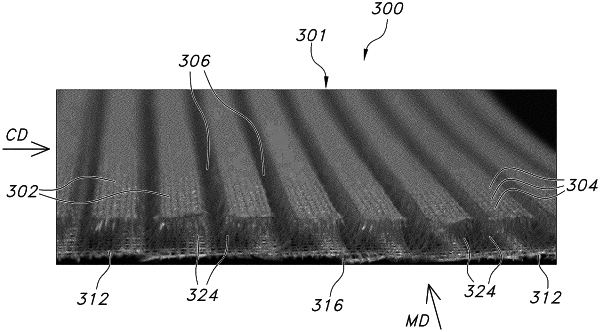| CPC D04H 3/07 (2013.01) [D04H 3/11 (2013.01)] | 2 Claims |

|
1. A forming fabric comprising:
a first major outer surface including first land areas formed from entwined first filaments and that extend predominantly in a first plane, wherein said first land areas define a plurality of first openings each having a minimum area in said first plane of at least 12 mm2 and collectively comprising at least 40% of the total area of said first major outer surface;
an opposed second major outer surface distal to the first major outer surface, said second major outer surface including second land areas formed from entwined second filaments and that extend predominantly in a second plane substantially parallel to the first plane; and
a foraminous interior area located between said first and second land areas, said interior area having a thickness greater than 2.3 mm and further having third filaments extending downwardly from said first land areas to said second land areas, said third filaments being entwined with said first filaments in said first land areas and said second filaments in said second land areas and further wherein at least some of the third filaments extend downwardly adjacent said first openings and at least partially define recesses located between said first and second land areas and further wherein the interior area allows air to flow both downwardly and sidewardly therethrough; and
wherein said third filaments proximate to centers of the first land areas extend substantially perpendicularly to the first plane and said third filaments adjacent respective first openings extend at an angle inwardly towards and directly under the respective first openings.
|